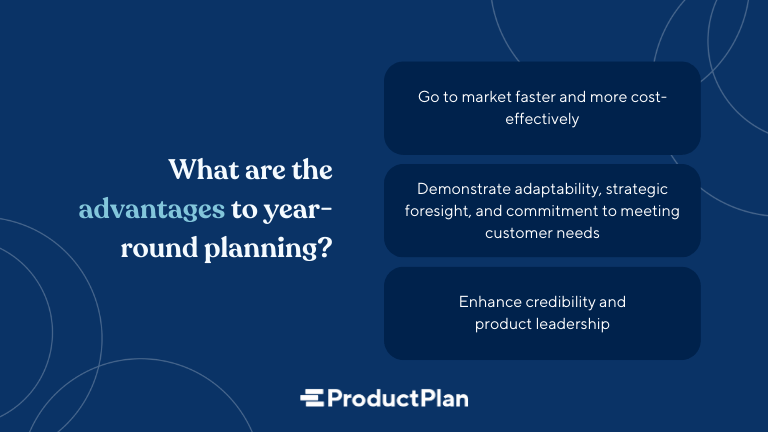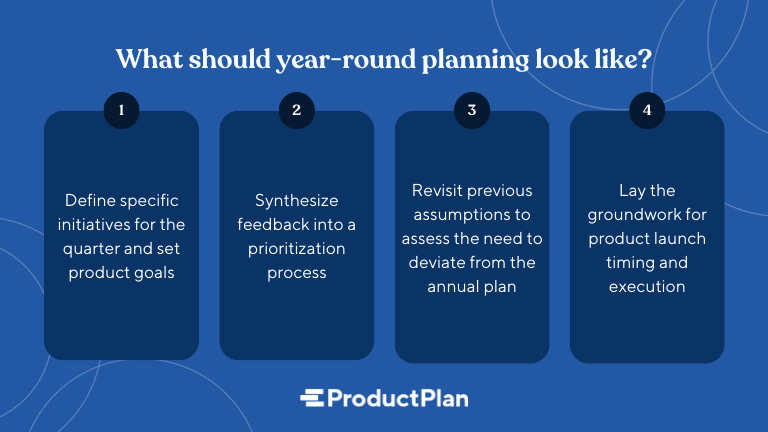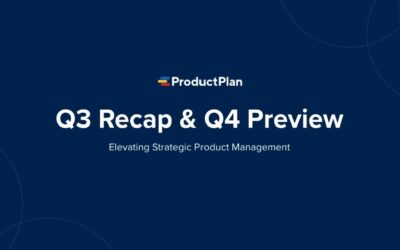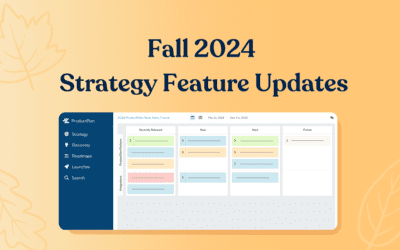Sticking to inflexible annual planning cycles can introduce significant challenges in the era of rapid technological advancements. The static nature of traditional product planning cycles fails to consider quickly-improving technologies and unforeseen changes in the market. This approach can be a significant pitfall in today’s fast-paced environment, making your organization vulnerable to missed opportunities and increased risks.
Iterative planning enables product management teams to respond quickly to changes in the market and emerging trends. The ability to adapt and adjust to changing product strategies positions companies for continuous improvement and sustained success. Ongoing planning is crucial for staying ahead in a competitive landscape.
The Case for Embracing Agility
Companies that have successfully embraced continuous planning showcase the benefits of staying nimble. From pivoting strategies based on user feedback to quickly adapting to market shifts, many organizations have embraced the competitive advantage that year-round planning brings.
For one, product teams can go to market faster and more cost-effectively. Product managers can streamline decision-making, identify efficiencies, and reduce time-to-market by consistently reassessing and refining their strategies.
Year-round planning can also help product teams improve their chances of success. Continuous planning helps product teams understand market dynamics and customer feedback while remaining competitive and making informed decisions. Implementing this proactive approach maximizes the chances of a successful product.
Finally, an iterative planning process can help enhance your credibility and product leadership. Year-round planning demonstrates adaptability, strategic foresight, and a commitment to meeting customer needs. You can improve your company’s reputation by delivering quality products and showcasing yourself as a leader in innovation.

Setting your annual planning processes to support year-round planning
Before diving into best practices for year-round planning, product leaders should start by evaluating their current annual planning objectives. Yearly planning should not be discarded when shifting to an iterative approach. Instead, it should be reviewed and adjusted to support the flexibility and strategy of the team’s goals.
Firstly, you want to review your product vision. When setting strategic corporate goals, your team should have actionable and aspirational goals aligned with the company’s overall strategy. Your organization can then leverage these strategic objectives to drive yearly prioritization decisions. Frequent reviews will set your team up for strategic reflection on progress and future change.
Then, set the expectation that change is inevitable and some unknowns will be discovered later. Assuming that things will go according to plan leaves little room for innovation and adapting to new trends. Establishing a culture of continuous improvement and learning from unexpected changes is crucial.
Lastly, invite your key stakeholders to provide feedback throughout the process. You want to create room for multiple perspectives and diversify ways to achieve desired outcomes. Based on the findings of our 2024 State of Product Management Report, 76% of product teams are using live meetings to communicate product strategy. Still, opportunities exist to encourage your stakeholders to observe changes and provide feedback asynchronously, like utilizing a product management platform. This can open up doors for product teams to make decisions faster and to feel empowered knowing their stakeholders are aligned with their product strategy.
At the end of an annual planning process, the team should have a clear vision for the year: collective goals and how new ideas in the future will tie back to the outcomes that the company has set to achieve as a whole. Annual planning doesn’t have to be the perfect solution to your year, but you can set your team up for success by building in space to pivot.
What should year-round planning look like?
When implementing year-round planning practices, taking time on a regular cadence outside of annual planning is vital to evaluate outcomes and feedback and adapt where necessary.
When your team checks in on your goals more frequently, it is recommended to set quarterly planning objectives aligning with the company’s overall goals during annual planning. These quarterly planning objectives can be broken down into four steps:

In addition to following these key steps, there are several best practices that you should follow throughout the year to ensure you are being efficient in your product-planning processes.
Best Practices of Year-Round Product Planning
- Maintain an open line of communication with your customers and end users throughout the entire product lifecycle. Ongoing dialogue fosters a deeper understanding of customers’ evolving needs and provides insights that guide the creation of the most effective product strategy. Talking with end users ensures that your product aligns with user expectations, resulting in a more resonant and successful end product.
- Stay informed on market trends. This step is essential for product management leaders. Regular market assessments give product teams insights into changing customer needs and preferences. Keep a pulse on what your competitors are taking on as their latest strategies, too.
- Rely on data to support your decision-making. Data and analytics can help your team get a clear understanding of feature performance and customer needs. Challenge your team’s ways of working by asking questions like, “Are we measuring the right things?” and “Are there other metrics we should be measuring?”
- Collaborate and communicate with your key stakeholders. The alignment between product, executives, engineering, operations/support, sales, and marketing functions is crucial for product success. Having a representative from the various departments will allow you to create a product strategy that supports other teams at the company while bringing in the best ideas. Regularly check in with your stakeholders and be transparent throughout the planning process.
Conclusion
The term “annual planning” alone can put a lot of pressure on product teams. But learning more about untraditional ways to set team- and organization-wide goals can alleviate some of that pressure and help product leaders embrace change and innovation. Understanding that there will need to be necessary adjustments outside the standard once-a-year planning process empowers teams to bake in flexibility and work with changing times rather than staying stagnant in a changing market.
Curious to learn more? Check out our annual 2024 State of Product Management Report! We’re sharing data-packed insights into how product teams support the entire product lifecycle, from idea to launch and beyond. Download your copy of the report today!



